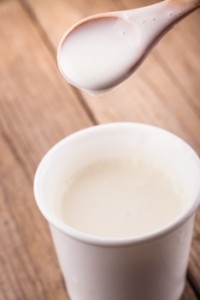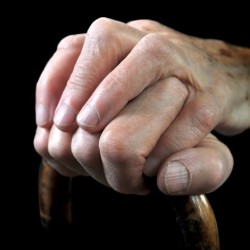Should your patients drink cow’s milk? Should they eat red meat? It’s a question that cannot always be answered with a categorical yes or no. This new study from the University of Central Florida, shows that a strain of bacteria commonly found in milk and beef may be an associative trigger for developing rheumatoid arthritis (RA) in people who are genetically at risk.
Inflammatory diseases like RA are typically categorized as a autoimmune, due to genetic disorders and 
The study, published in Frontiers in Cellular and Infection Microbiology journal, found a significant number of patients with RA had a mutation in the PTPN2/22 gene, the exact same mutation in Crohn’s disease patients. Of those with RA and the genetic mutation, 40% tested positive for this milk bacteria.
What is MAP and How Does it Relate to Rheumatoid Arthritis?
The MAP bacteria is found in about half the cows in the United States. The bacteria can be spread to humans through the consumption of infected milk, beef, and produce fertilized by cow manure. Some agricultural experts are calling for a vaccination to rid cows, goats and other ruminant animals of the bacteria. Pasteurization kills some but not all MAP bacteria, and only if there are less than 10 MAP bacteria per milliliter of milk.
All of these factors make this discovery all the more important. About 1.3 million adults in the U.S. have rheumatoid arthritis, more often women than men. Although case studies have reported that some RA patients suffer from Crohn’s disease and vice versa, the researchers say a national study needs to investigate the incidence of the two diseases in the same patients.
Here you have two inflammatory diseases, one affects the intestine and the other affects the joints, and both share the same genetic defect and treated with the same drugs. Do they have a common trigger? That was the question we raised and set out to investigate,” ~ Saleh Naser, UCF infectious disease specialist

For the study, Bég recruited 100 of her patients who volunteered clinical samples for testing. Seventy-eight percent of the patients with rheumatoid arthritis were found to have a mutation in the PTPN2/22 gene, the same genetic mutation found in Crohn’s patients, and 40% of that number tested positive for MAP.
We believe that individuals born with this genetic mutation and who are later exposed to MAP through consuming contaminated milk or meat from infected cattle are at a higher risk of developing rheumatoid arthritis,” Naser said.
Why this study is significant:
1. To the researcher’s knowledge, this is the first study designed to elucidate the molecular cause of inflammation in RA in association with environmental triggers such as MAP. The latter has been associated with similar inflammation in CD, T1D, multiple sclerosis, and others.
2. This study is first to report the detection of MAP DNA in more than of one third of RA patients.
3. Detection of MAP infection in RA patients should be investigated further as to whether it is a complication of the treatment or a possible culprit of the disease.
4. Although MAP IS900 DNA is good in detecting MAP presence in patient samples, it does not provide information about the MAP bacteria viability. This in turn does not show accurate status of either active or previous infection in the patient sample. Thus, culturing of the blood from RA patients is necessary to determine if an active MAP infection is present in the patients.
5. Genetic predisposing is key for susceptibility to disease, severity of inflammation and possible ability to respond to treatment.
“We don’t know the cause of rheumatoid arthritis, so we’re excited that we have found this association,” Bég said. “But there is still a long way to go. We need to find out why MAP is more predominant in these patients—whether it’s present because they have RA, or whether it caused RA in these patients. If we find that out, then we can target treatment toward the MAP bacteria.”
The team is conducting further studies to confirm findings and plan to study patients from different geographical and ethnic backgrounds. Although case studies have reported that some RA patients suffer from Crohn’s disease and vice versa, the researchers say a national study needs to investigate the incidence of the two diseases in the same patients.





